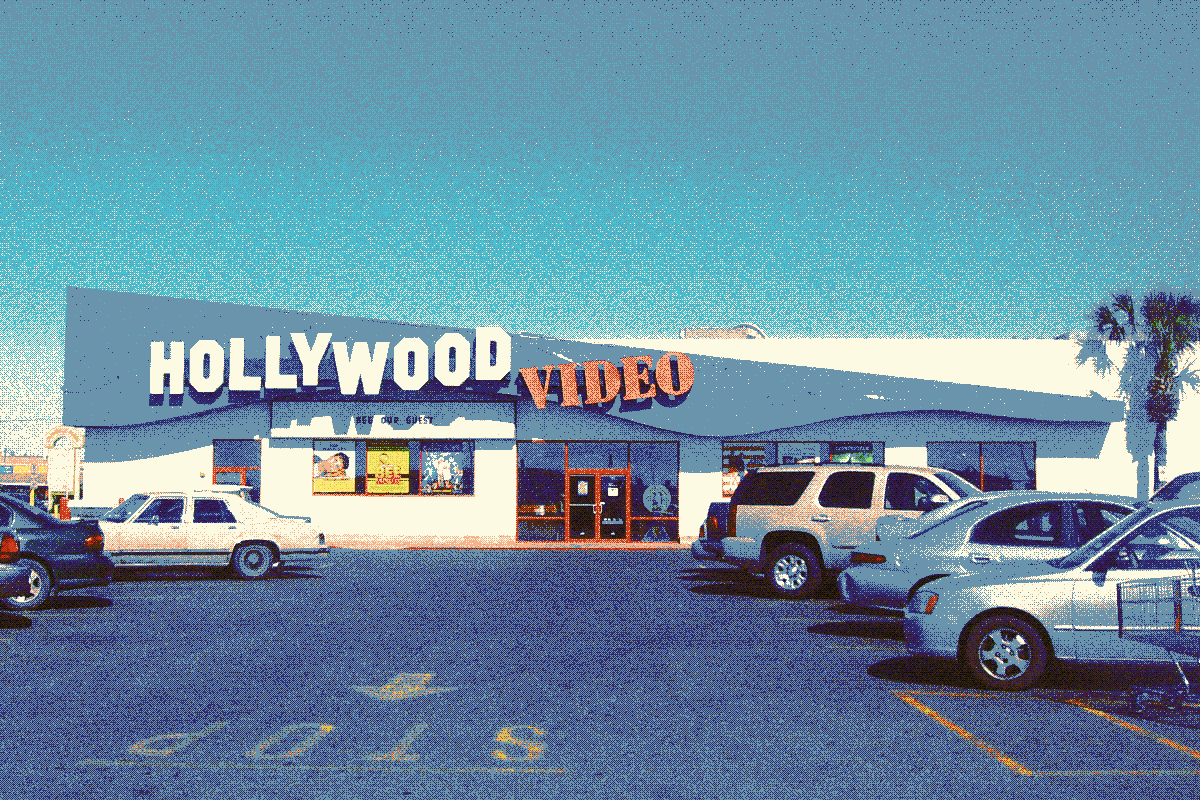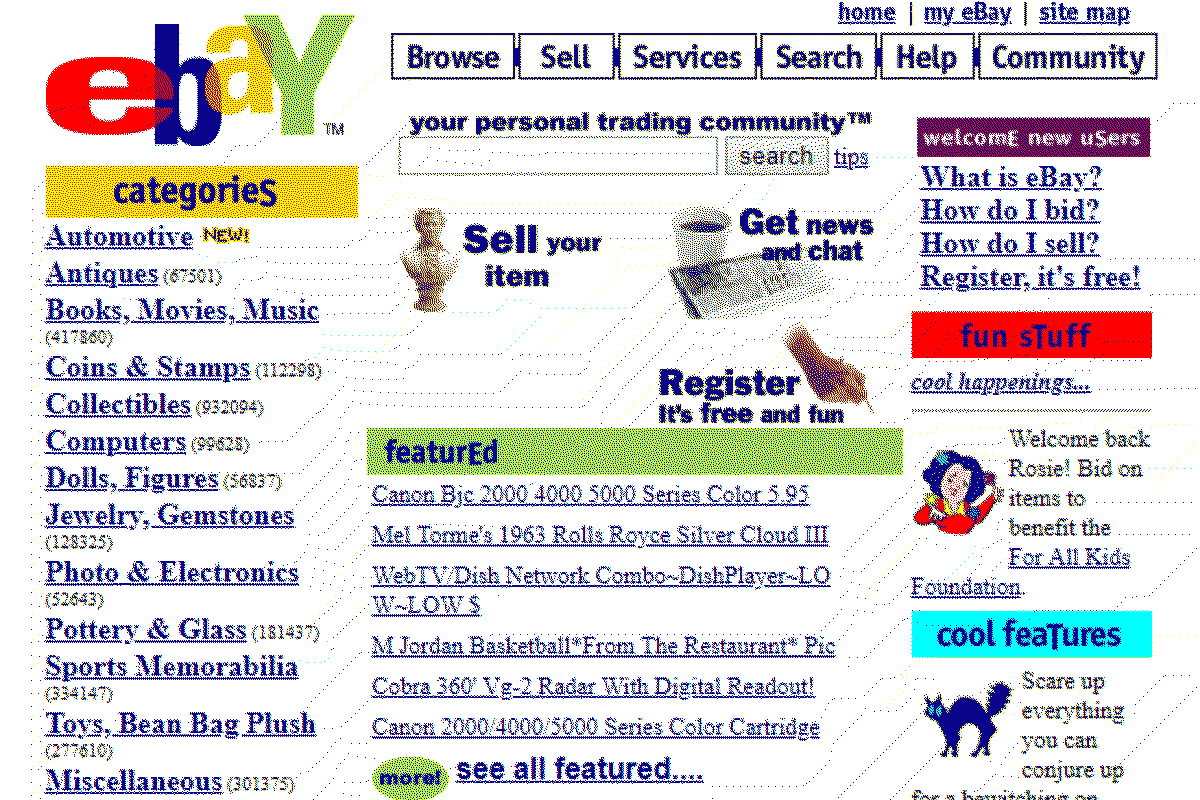| you are here |
|
|||











If you have a moldy tape in your collection and you do not want to get rid of it, put it into a plastic bag and store it separately from the rest of your collection. Do NOT play the tape in the same device you play your other tapes or they will be infected.
What about mold cleaners? There are a handful of methods for cleaning mold off of tapes to salvage them and make them playable, or at the very least to prevent them from ruining the rest of your collection. Look for my guide coming soon on how to mitigate mold in VHS tapes! In the meantime, check out VHS is Life's mold cleaner, trusted by the Smithsonian Libraries and Archives.
Some tapes are also prone to sticky shed syndrome, where the binder that holds the magnetic particles to the tape breaks down.
Keep in mind the risk is in the name with magnetic media. Exposure to strong magnetic fields can degrade the signal quality or erase the tape entirely. Also pay attention to the video signal format (NTSC for North America and Japan, and PAL/SECAM for Europe and parts of Asia) which will impact playback.
Scratches and surface damage will be your biggest concern with discs. Some of these are superficial and can be easily cleaned with a lint-free cloth and some distilled water or high purity (90% or higher) isopropyl alcohol. You may also buy commercial disc cleaning solutions. There are multiple layers to a disc and the data layer is distinct from the bottom plastic layer. Scratches or other damage to the data layer or reflective layer cannot be repaired, while scratches to the plastic layer can typically be salvaged. Some stores will offer to resurface your disks for you when you buy them. This shaves off a thin piece of the plastic layer, so it is not advised to do this more than once or twice.
Some stores tape their items closed to prevent theft and mix-ups. Ask to check the item before you make a purchase to confirm it’s in good condition. Discs don’t mold, but they are also susceptible to a kind of rot where the chemical breakdown of the reflective layer causes pitting, discoloration, or tiny divots. The data loss from this is irreversible.
DVDs and Blu-rays are often region-locked, which means they can only be played on a device manufactured for that region or a region-free player. There are some ways around this, but the process can be complicated and the legality questionable. LaserDiscs are not region-locked, but their video signal format may differ (NTSC for North America and Japan, and PAL/SECAM for Europe and parts of Asia).
Vinyl records are made when heated PVC (polyvinyl chloride) is pressed into a flat disc with engraved grooves that store sound. As a result, vinyl records are particularly suceptible to wear and tear. Look for visible scratches, cracks, scuffs, and warping. Warped records may not sit flat on a turntable which could result in uneven playback.
Vinyl attracts dust and grime, which can build up in grooves over time. Use an anti-static carbon fiber brush to remove loose dust before and after playing a record. This prevents buildup and static-related noise. For wet cleaning, apply a vinyl-safe cleaning solution (avoid alcohol-based cleaners) with a microfiber cloth or soft brush, wiping along the grooves. For heavily soiled records, a record shop may offer to clean your record in a machine.
The album cover protects the record, so check for split seams, mold, water damage, or missing inserts. While sleeve wear doesn’t impact play, an intact sleeve helps preserve the vinyl’s condition.
Some releases, especially budget reissues, have low-quality pressing which can lead to subpar sound. If you're after premium audio quality, research which pressing is best.
Some sellers offer grading scales (e.g. Near Mint, Very Good, Good, etc.), but grading can be subjective, so inspect records closely if you're able to.
Look for loose bindings or missing pages, writing or highlighting, torn pages or covers, yellowing from acidification, and a musty smell.
There is a big difference between the light odor of a used book which often smells a little bit like toner cartridge from the ink and slightly sweet from the wood pulp, and a musty book which smells like laundry that was accidentally left in the washing machine for too long. Once you catch that first whiff of a truly musty item, you’ll never forget it.
Some items also hold on to the scent of cigarette or cigar smoke if they were stored in a smoker’s home. If you’re buying online, a seller will usually state if the item has an odor and whether or not it’s coming from a smoke-free or pet-free home. If the seller doesn’t include a note about the smell, you can always message them to confirm.
Tapes that were produced towards the end of VHS production in the early 2000s can fetch extremely high prices online, which is why a VHS of Napoleon Dynamite (2004) may be $50 online while a VHS of Titanic (1997) is usually never more than $5. Some extremely rare tapes will sell for hundreds or dollars or even over $1,000! Sorry, Classic Disney clamshells are about as much of a goldmine as Beanie Babies!
Grouping these together isn’t necessarily fair because they all have different price points. DVDs will be less expensive than Blu-rays which will be less expensive than Ultra High-Definition Blu-rays (commonly known as 4K). Box sets will be more expensive than single discs, as will deluxe or special editions such as director’s cuts or SteelBooks. You can typically find discs for anywhere from $3 to $5 at thrift stores. Many DVDs and Blu-rays are still actively produced or re-released by niche labels like Criterion, Shout Factory, Vinegar Syndrome, etc. Out-of-print titles or titles that have never been made available on streaming (up until recently 28 Days Later (2002) was a perfect example) could fetch a high price.
Similarly to their smaller counterparts, the price of LaserDiscs is often influenced by their exclusivity. Common mainstream films like Jurassic Park (1993) or Twister (1996) can typically be found for $5-$15 at antique stores and record stores. Box sets, deluxe editions, rare or cult films, and films that are not available for streaming often fetch higher prices. Japanese imports are often highly prized by LaserDisc collectors as many had unique cover designs or alternate titles. A Japanese import of Disney’s controversial Song of the South (1946), which has never been released on home media in the United States and possibly never will be, sells for about $120 online.
Many factors influence the price point of vinyl that are far too numerous to list here. Key things include pressing information (first pressing versus later reissues), condition of both the jacket and the vinyl, label variations or special editions, and packaging. I highly recommend visiting your local record store and getting to know the staff and regulars who are often fonts of knowledge when it comes to building up your collection.
Most cassettes are sold for under $5, and you can sometimes find them for $1 and under at thrift stores and garage sales. Similarly to all of the other media types listed so far, several factors influence a cassette’s price. Sealed tapes, tapes from indie, punk, or underground labels, playback condition, and cultural nostalgia often influence a tape’s value. When Kate Bush’s “Running Up that Hill” played during a pivotal moment in Season 4 of Stranger Things, her album Hounds of Love instantly shot up in value. At its height, the tape was selling for over $100! I wound up finding it at a record store in Las Vegas for about $30.
Despite the popularity of music streaming services like Spotify, Apple Music, and YouTube, CDs are still very common and likely one of the first forms of physical media you will encounter. Most retailers like Barnes and Noble still sell CDs. Older albums that may no longer be in print can commonly be found at thrift stores and record stores. Similarly to the previously mentioned formats, several factors influence a CD’s price, but you can typically find used CDs for $1-$5. Nostalgia and rarity have a huge impact on a CD’s price. I’ve been on the hunt for the Flight of the Navigator original soundtrack for years. I’ve never seen it in the wild and it’s never been listed online for under $100! Why? Beats me!
This is another format that varies wildly across collections. You typically see the following types of book collections:
I primarily collect children’s books from the 1980s and 1990s, like Goosebumps, The Babysitter’s Club, Point Horror, and other series. Price points are all over the place for these and I have some strong opinions about how much a vintage mass market paperback should cost. Most of these books sell for under $10, often closer to $3-$5 per book. However, some series like Gilmore girls, Fear Street Seniors, or Goosebumps Series 2000 sell for much more - anywhere from $15 to $100 and up! This is largely due to three factors: Similarly to Discogs, you can check the average price of a book you may be interested using sites like eBay or Thriftbooks. Keep in mind though that an item is only worth as much as someone is willing to pay for it. Do not let the fear of missing out or a fabricated sense of urgency push you into spending more than you are comfortable with on an item! Most of these things are truly not one-of-a-kind. Betamax and VHS tapes may look alike, but they require two different devices, both of which are commonly called a videocassette recorder (VCR). A Betamax VCR is often called a Betamax player. VCRs process an analog signal format that is specific to the region in which the player was manufactured:
Most VCRs are not multi-standard which means a US-manufactured NTSC VCR will not play an Australian-manufactured PAL tape. There are video converters commercially available, but a good rule of thumb is to only buy tapes and hardware in the same format region.
Both Betamax players and VCRs require a composite analog video (yellow) and audio (red and white) RCA cord to send an analog signal from the player to your TV. Be sure to check whether or not your TV has RCA inputs. Many newer Smart TVs do not. You can purchase a RCA-to-HDMI converter which will plug into one of the HDMI ports on your TV and will convert the analog signal to digital. LaserDiscs are interesting because they combine analog and digital technology. The video is encoded using frequency modulation and pressed onto a 12-inch disc that looks like a giant CD. Most LaserDiscs include digital audio tracks, however early titles often only contain analog audio. Some enthusiasts believe this is the best way to watch a movie.
Similarly to Betamax and VHS tapes, LaserDiscs and their players are not multi-standard which means a US-manufactured NTSC player will not play an European-manufactured PAL LaserDisc. Nearly all LaserDisc players output through RCA connectors (yellow for video, red and white for stereo audio) just like VCRs, which means you will need a TV with RCA inputs or a RCA-to-HDMI converter. Some discs require flipping or switching sides mid-film, unless your player has an “auto side-flip” feature.
Note: While LaserDiscs are not particularly expensive, the machines to play them can run upwards for $500 or more. If you are just getting started with collecting physical media, you may want to start with another audiovisual format.
Blu-rays and DVDs share similar packaging and terminology, but they are unique formats. All Blu-ray players can play DVDs, but not all DVD players can play Blu-rays. In fact, most can’t. This has to do with something called “backwards compatibility.” DVDs were introduced in the 1990s and dominated the market for nearly 20 years. Blu-rays became much more prevalent heading into the 2010s. Since most people already owned large DVD collections when Blu-rays became mainstream, companies designed Blu-ray players to also read standard DVDs.
Why is it called ‘Blu-ray’? DVD players use a red laser to read the data on DVD discs. The longer wavelength means it cannot penetrate the more densely packed data on a Blu-ray disk, which has to be read by a blue-violet laser.
Most Blu-ray players use HDMI outputs which make it easy to plug in to a Smart TV. Some DVD players have HDMI outputs but older models will require RCA connectors just like VCRs. If your TV does not have RCA inputs, you can purchase a RCA-to-HDMI converter which will plug into one of the HDMI ports on your TV.
Cassette tapes require a cassette player. There are multiple options at all sizes and price points, from a classic Walkman to a boombox to an integrated stereo system with a cassette, CD, and record player combined in a single unit.
Walkmans and other portable cassette players often seem broken due to dried or broken internal belts that are relatively easy to replace. If you are comfortable with tinkering, you may be able to find a great deal on a classic Walkman being sold “for parts or repair” that just requires a simple fix. If you’d like to get started with a ready-to-use option, you can find meticulously refurbished Walkmans online through sites like Retrospekt or eBay. I occasionally post my own restored Walkmans on my Instagram, so be sure to check there too!
Similarly to cassette players, CDs require a CD player which may be standalone, portable like a Discman, or integrated into stereo systems. CD players are still produced today and are widely available secondhand. Used models often work without issue, but I recommend inspecting the battery compartment for corrosion. You can easily clean the battery compartment and the laser lens with some high purity isopropyl alcohol (90% or higher) and a lint-free cloth.
Portable cassette and CD players require headphones or some kind of external audio source. You can purchase a bluetooth converter to plug into your device and pair with wireless headphones, but for the full retro effect, a set of over-ear headphones is ideal. Since headphones are worn close to the face and are difficult to sanitize thoroughly, I recommend you purchase these new.
Many cars still include CD players built into the dashboard, though this is slowly being phased out in newer models. In my opinion, nothing beats driving down the highway with the windows down and your favorite CD playing. Using the same bluetooth adapter for wireless headphones, there are ways to sync a Walkman or Discman to a newer car. This has quite a few moving parts, so just remember to wait until you’re safely stopped to change a tape or CD.
Vinyl records require a turntable (also called a record player) which reads analog audio pressed into the vinyl using a stylus, cartridge, and tonearm. There is an entire culture dedicated to record collecting, which often results in fierce debates about equipment. For every 1,000 collectors there will be 1,000 different opinions on the best way to play records. Nothing beats befriending your local record shop owner, but check out some recommended resources below for great information on how to get started selecting your first system.
Quick Note: There is nothing wrong with listening to records on a Crossley suitcase record player or other “entry level” turntable. People are very passionate about collecting physical media and may try to shame you for listening on what they would call a subpar system, but the entire point of collecting is for YOU. Do you enjoy it? Do you like how it looks? Does it make you happy? That’s all that matters! As something that exists in the real world, physical media is vulnerable to environmental degradation. Long-term exposure to direct sunlight will fade artwork on slipcases or book spines, cause plastic to warp, and break down adhesives over time. Sunlight can also accelerate the oxidation of optical media or cause cassette shells and cases to become yellowed and brittle. To the fullest extent possible, keep collections out of direct sunlight.
Physical media is also susceptible to damage from heat and humidity. Mold and mildew can impact all types of physical media, so avoid basements, attics, garages, or any location where moisture and temperature may fluctuate dramatically.
A good rule of thumb is if a space isn’t comfortable for you to sit and read, listen to, or watch your physical media, it’s probably not a suitable spot for long term storage of your physical media. One of the unspoken fears in the media archive community isn’t the loss of physical media, it’s the loss of the systems needed to access them. The resurgence of physical media in popular culture has led to the production of new cassette and CD players, but VCRs stopped being manufactured in 2016 and are not likely to be produced brand new again. The same goes for Betamax and LaserDisc players, and as users are pushed more and more towards streaming, we will likely eventually see the end of DVD and Blu-ray player production. Media longevity doesn’t matter if the equipment used to access it become inaccessible. The best way to avoid that is to take good care of your equipment. I would be a bad archivist if I didn’t stress the importance of cataloging and tracking your collections. In fact, I am a bad archivist considering I’ve accidentally purchased duplicate, and in some cases triplicate, of something because I haven’t properly tracked my collections! Cataloging can be done by hand such as in a notebook or binder, or digitally using tools like a spreadsheet or online database. There is no right or wrong way to catalog your system, it’s whatever works best for you! I use Discogs to catalog my music collection, and I have the app installed on my phone. This makes it easy to look up titles as I’m browsing to make sure I don’t already have it, and I can price-check to see whether or not a store is offering a fair price. I track my VHS, book, and other physical media collections using Google sheets. I also have the Google sheets app installed on my phone which makes it easy to pull up and check whether or not I have a title.
At the very least, you should take note of the title and format (VHS, CD, LP, etc.) of your collection. You may also want to note:
See below for a snapshot of my tracking systems. For books, I like to track the series, title, author, publication date, condition (using a scale of great, good, fair, or poor) and any notes such as if the book is a first printing or has any kind of special inserts. I sometimes expand upon the condition in my notes about why I ranked something the way I did, such as a first printing with writing inside that I rated as fair. There are tons of online resources and creators dedicated to collecting, preserving, and enjoying physical media! Here are a few of my favorites:
Feeling generous? Buy me a coffee! © K.D. Kemp 2025. All rights reserved.How Much Should I Pay?
This is a touchy subject because the rise in popularity for collecting physical media has led to an increased demand, which has driven up the cost whether you’re buying in-person or online. That doesn’t mean all hope is lost! Where you buy makes a difference. A thrift store or garage sale will typically cost less than a record store or antique store. In-person will typically cost less than online. With a little digging and patience, you can still score some great deals both in-person and online.
My decision on how much to pay depends on who I am buying it from. If a corporate thrift store is charging $20 for a hard to find VHS tape, I probably won’t buy it. By comparison, if my local video store is selling the same tape for $20, I’ll happily buy it knowing that I’m supporting a small business in my local community. The same goes for antique vendors or garage sales.
I personally like to find as many things as I can “in the wild” instead of purchasing them online. I enjoy the thrill of hunting and finding something, especially when I get a good deal on it! I’ll never forget finding a copy of the Disney Channel Original Movie Motocrossed (2001) for $1 at a thrift store in Joshua Tree, California. That being said, some things are very, very hard to find in the wild especially now that many corporate thrift store and resellers seek out high-value items to sell online. Unless you’re willing to wait to find something rare, you may have to purchase it online.
Movies & TV
Betamax and VHS tapes
You may find these for as low as $1 at thrift stores or as high as $100 online for a very rare tape. The condition of the tape and case, whether or not the tape is open, sealed or watermarked, and playback quality all impact a tape’s price. You can expect to typically pay $3-8 for most tapes.
Blu-ray/DVD/4K
LaserDiscs
Music
The price point of music varies wildly across format much more dramatically than films and TV shows. Your best bet for determining whether or not something is fairly priced is to use a resource like Discogs to check the average sale price.
Vinyl
Cassettes
Cassettes have become so popular again that even modern artists have started releasing their music on cassette. Most record stores have a section for new cassette releases or you can often buy directly from the artist’s website. Even Barnes and Noble sells some new cassettes!
CDs
Books
Okay, I Bought My First Item. How Do I Play It?
Betamax and VHS tapes
LaserDiscs
Blu-ray/DVD/4K
Cassettes
CDs
Vinyl
Storage & Cataloging
Proper storage and cataloging are essential for preserving your physical media. Whether you’re collecting for archival, aesthetic, or nostalgic reasons, the conditions in which you store your collections and the systems you use to track them will have a big impact on their longevity (and whether or not you wind up buying duplicate of something!).
Sunlight, Temperature, and Humidity
Playback Equipment Maintenance
Cataloging
What information should I track?
My VHS tracker
![]()
My book tracker
![]()
Where Can I Learn More?
Movies and TV:
Music:
Books: